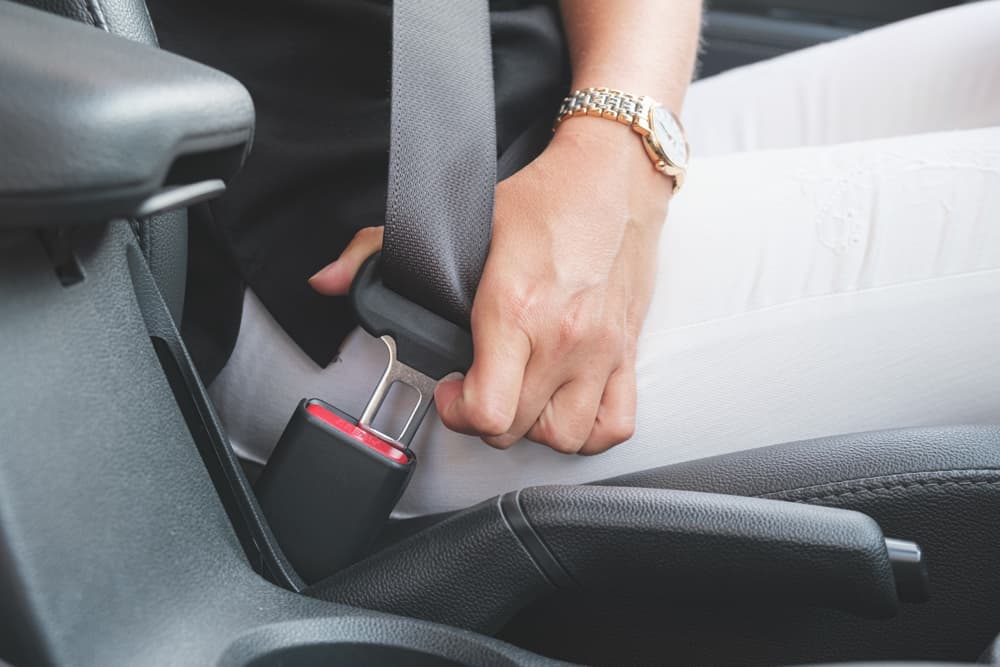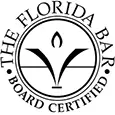Wrecked Without a Buckle: Can I File a Claim if I Wasn’t Wearing a Seatbelt in a Car Accident?
A car accident can jar your life in moments, and on top of everything else, a thought surfaces: You weren’t wearing your seatbelt. If you’re asking, “Can I file a claim if I wasn’t wearing a seatbelt in a car accident?” The answer is often yes, you may still pursue a claim. A skilled car accident lawyer can help you navigate the process, as the details of your situation will shape the outcome.
Table of Contents
ToggleSeatbelt Laws and Accident Claims
State laws require people to wear seatbelts to reduce injuries in a crash. However, not using a seatbelt doesn’t automatically mean you lose your right to seek compensation if someone else caused the accident.
If another driver’s reckless actions led to the collision, their responsibility is a central issue in your car accident claim, even if you were not wearing a seatbelt.
The Overriding Factor: Negligence

Insurance companies look at all factors in a car accident and may consider your lack of a seatbelt when evaluating your injury claim. The other driver’s negligence often remains the primary reason for the crash and your initial injuries.
The key is that the fault for the accident itself is looked at separately from whether you wore a seatbelt. Many people successfully file a claim even if they were unbelted during the incident.
The Concept of Shared Fault
Many states use a system called comparative negligence or comparative fault. This system looks at the fault of everyone involved in an accident. If you weren’t wearing a seatbelt, a court or insurance company might decide you contributed to your own injuries.
Investigators assign you a percentage of fault for the harm a seatbelt might have prevented, and under comparative negligence, your total compensation is reduced by your percentage of fault.
For example, if you are found 20% at fault for your injuries because you didn’t use a seatbelt, your final settlement or award for those specific injuries might be reduced by 20%.
Some states, like Florida and Washington, allow you to recover damages even if you are partially at fault. Understanding how your specific situation interacts with shared fault rules is helpful when pursuing a car accident claim.
The “Seatbelt Defense” Argument
The other driver’s insurance company might use the “seatbelt defense.” This means they argue that your injuries are worse or only happened because you didn’t wear a seatbelt.
To use this defense, they generally must show evidence. They try to prove that if you had been buckled up, specific injuries would not have occurred or would have been less severe.
This isn’t always easy for them to demonstrate. The defense must link particular injuries directly to the lack of seatbelt use, not just make a general statement.
Successfully making a claim if no seatbelt was in use often involves directly addressing this defense. A qualified personal injury lawyer can challenge these assertions.
What About Injuries Unrelated to Seatbelt Use?
Some injuries from a car accident happen regardless of whether you wore a seatbelt. For example, if the crash impact was severe, certain injuries might have resulted anyway.
The other side’s argument about your car accident claim from not wearing a seatbelt should focus only on injuries a seatbelt supposedly would have prevented.
If the other driver was clearly at fault for causing the collision, you may pursue compensation for injuries the seatbelt wouldn’t have prevented. It’s a detailed point that often requires careful examination of the accident and medical evidence.
A car accident lawyer can help you build a strong case for compensation.
Your Rights After an Accident Without a Seatbelt
Even if you weren’t wearing a seatbelt, you still have rights after a car accident caused by someone else. Your primary right is to seek compensation from the at-fault party for your losses.
Failing to wear a seatbelt might influence the amount of certain damages, but it typically doesn’t erase your ability to file an accident claim if you were unbelted.
You can generally claim various types of damages. These include:
- Medical Expenses: This covers costs for your doctor visits, hospital stays, medications, and rehabilitation therapy needed due to injuries from the crash. Future care is covered as well.
- Lost Income: If your injuries prevented you from working, you might recover the wages you lost during your recovery period.
- Diminished Earning Capacity: If your injuries are severe enough to stop you from working or force you into a lower-paying role, you may seek compensation for your loss of or diminished earning capacity.
- Pain and Suffering: This compensates you for the physical pain, emotional distress, and reduced quality of life resulting from the accident and your injuries.
- Property Damage: This payment covers the repair or replacement costs for your vehicle or any other personal property damaged in the accident.
- Disability and Impairment: You may seek compensation for long-term or permanent disabilities, loss of function, or reduced ability to perform daily activities resulting from the accident.
The other driver’s responsibility for causing the accident remains a core element. If their negligence led to the collision, your decision to file a claim for a car accident where you weren’t wearing a seatbelt is a valid one.
The legal process looks at all contributing factors, but the initial cause of the wreck is very significant. Don’t assume you have no options before exploring them with a personal injury lawyer.
How a Lawyer Helps With Your No-Seatbelt Car Accident Claim
Navigating a car accident claim when you weren’t wearing a seatbelt adds layers of complexity. A lawyer experienced with these types of cases provides support and guidance. They work to protect your interests throughout the claims process.
Investigating the Accident
A personal injury lawyer begins by fully investigating your car accident. They gather police reports, speak with witnesses, and collect photographic or video evidence. The goal is to establish a clear picture of how the accident happened and who was at fault.
This investigation helps build a strong foundation for your car accident claim, even if you didn’t wear a seatbelt.
Dealing With Insurance Companies

Insurance adjusters are trained to minimize payouts for the company. They may try to use the fact that you weren’t wearing a seatbelt to significantly lower your settlement offer or deny parts of your claim.
A lawyer acts as your representative, handling all communications and negotiations with the insurance companies involved. They protect you from pressure tactics and work to resolve your car crash claim fairly.
Proving Fault for the Crash
A key part of your lawyer’s job is to prove that the other driver’s negligence caused the accident. They use the evidence from the investigation to clearly show how the other party was responsible for the collision itself.
Your car accident lawyer focuses on this critical aspect because, without the other driver’s fault, there would be no accident or injuries in the first place. This is paramount when you file a claim if you weren’t wearing a seatbelt in the car accident.
Countering the Seatbelt Defense Argument
When the defense argues that your lack of seatbelt use caused or worsened your injuries, your lawyer challenges these claims. They may work with medical professionals to provide opinions on how your specific injuries occurred and whether a seatbelt would have realistically prevented them.
They scrutinize the defense’s evidence, ensuring it directly links the absence of a seatbelt to particular injuries, not just general assumptions.
Calculating the Full Extent of Your Damages
Determining the true value of your claim involves more than just adding up current medical bills. Your lawyer calculates all current and future losses, including future medical treatments, long-term rehabilitation needs, lost earning capacity, and the full impact of pain and suffering.
A thorough calculation strengthens your position when you file a claim if you weren’t wearing a seatbelt.
Filing a Lawsuit (if Necessary)
Most car accident claims settle out of court. Sometimes, insurance companies refuse to offer a fair settlement. If this happens, your lawyer prepares your case for trial and represents you in court.
They manage all legal procedures, file necessary documents, and argue your case before a judge or jury, striving for fair compensation for your no-seatbelt accident injury claim.
FAQ for Can I File a Claim if I Wasn’t Wearing a Seatbelt in a Car Accident?
What Happens if I Was a Passenger and Didn’t Wear a Seatbelt in a Car Accident?
If you were a passenger who didn’t wear a seatbelt during a car accident, you generally have the right to file a claim against the at-fault driver or drivers. Similar to a driver’s claim, the fact that you were unbelted might affect the compensation.
Your status as a passenger doesn’t remove your ability to seek damages from those responsible for the crash.
Does Failing To Wear a Seatbelt Mean I’m Automatically at Fault for My Injuries?
Failing to wear a seatbelt doesn’t automatically mean you’re at fault for all your injuries or that you cannot make a claim. Fault for causing the car accident itself is a separate determination.
While not using a seatbelt might lead to a finding that you share some responsibility for the severity of certain injuries, it doesn’t usually bar your entire accident claim if another party’s negligence caused the collision.
Can I Still Make a Claim if the Other Driver Argues That My Injuries Were Caused by Not Wearing a Seatbelt?
Yes, you still have the option to make an injury claim even if the other driver or their insurance company argues that your lack of seatbelt use is the reason for your injuries. They have the burden of proving that the seatbelt would have prevented or lessened the specific injuries you suffered.
An attorney helps you counter these arguments when pursuing your car accident claim.
Will My Insurance Rates Go Up if I File a Claim After an Accident Where I Wasn’t Wearing a Seatbelt?
Filing a claim with your own insurance (for example, for Personal Injury Protection benefits if applicable) or against the at-fault driver doesn’t automatically mean your rates rise.
Insurance companies consider many factors when deciding on premium adjustments. These include who was primarily at fault for causing the accident and your overall driving record.
Is There a Deadline To File a Car Accident Claim?
Yes, every state has a law called the statute of limitations, which sets a firm deadline for filing a personal injury lawsuit. The rule varies from state to state. For example, in Florida, you generally have two years to file a claim, while Washington allows you three years.
This deadline applies to car accident claims, regardless of whether you wore a seatbelt. If you miss this deadline, you generally lose your right to seek compensation through the court system.
There are some exceptions to these deadlines, so contact a personal injury lawyer to learn about the specific time limit in your state.
Your Path Forward After an Accident
The moments after a car accident are confusing, but learning about your legal options is a step toward clarity. You don’t have to figure out the claims process on your own. Skilled personal injury attorneys offers a way to address your concerns and pursue the compensation you need to move forward.
Boohoff Law, P.A. provides a free consultation to discuss your situation and explain your legal options. Call us at (813) 445-8161 today.
Free Consultation
We Are Here For You 24/7
Reviews
– Elissa M.
“Really pleased with Boohoff Law! Received immediate responses when I had any questions. Treated amazingly by all staff … made this process a true breeze!”
– Caitlyn M.
– Brandy K.
Related Posts
I Was Partially At-Fault in a Rear-End Crash. Can I Still Get Compensation in Florida?
I Was a Passenger in an Uber Accident. What Are My Rights?
What Damages Can I Recover After a Jackknife Truck Accident?
Recovery is personal.
We’re here for you.
We’re close by. And if you can’t make it to us, we’ll meet you where you need us, at home or in the hospital.
You're better off with Boohoff.











The information on this website is for general information purposes only. Nothing on this site should be taken as legal advice for any individual case or situation. This information is not intended to create, and receipt or viewing does not constitute, an attorney-client relationship.
available 24/7
(877) 999-9999
